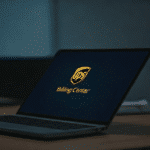How to Request a Transportation Charge Correction
If you discover discrepancies in your transportation charges, it’s crucial to request corrections to prevent overspending due to shipping or billing errors. This comprehensive guide outlines the necessary steps for requesting a transportation charge correction, detailing what to include in your request and offering tips for crafting clear and concise communications. Additionally, we explore common causes of charge inaccuracies, best practices to avoid future errors, and provide resources for further assistance and support. Continue reading to gain a thorough understanding of the transportation charge correction process.
Understanding the Importance of Requesting a Transportation Charge Correction
Requesting a transportation charge correction can lead to significant savings and increased efficiency for your business. Inaccurate charges may stem from several sources, including incorrect weight or dimensions, carrier errors, or billing mistakes. For instance, a study by ShipScience's 2023 Logistics Report indicates that businesses can save up to 15% annually by addressing billing inaccuracies promptly.
By rectifying these errors, you ensure that you’re only paying for the services you actually use, thereby avoiding unnecessary expenses. Moreover, accurate billing fosters trust and transparency with your customers. Overcharging can lead to customer dissatisfaction and damage your reputation, whereas precise charges help maintain positive relationships and encourage repeat business.
The correction process is typically straightforward. Most carriers offer online portals or customer service hotlines designed to handle such requests efficiently. Investing a few minutes to address billing issues can result in substantial long-term savings and operational improvements.
Common Reasons for Inaccurate Transportation Charges
Transportation charges can be incorrect due to a variety of reasons. Some of the most prevalent include:
- Incorrect Weight or Dimensions: Errors in recording the weight or dimensions of a package can lead to significant billing discrepancies.
- Carrier Mistakes: Human errors during the calculation of shipping fees can result in overcharges.
- Billing Errors: Mistakes in the invoicing process, such as duplicate charges or incorrect rates, can cause inaccuracies.
- Incorrect Shipping Methods: Selecting an inappropriate shipping method, like choosing overnight shipping when standard shipping suffices, can inflate costs unnecessarily.
Understanding these common issues can help you proactively prevent billing errors. For example, utilizing accurate measurement tools and double-checking shipping information can minimize weight and dimension-related discrepancies.
Steps to Follow When Requesting a Transportation Charge Correction
Follow these detailed steps to effectively request a transportation charge correction:
- Gather Information: Assemble all necessary details, including the invoice number, tracking number, package dimensions, and weight.
- Write a Request Letter or Email: Clearly explain the reason for the correction, providing all relevant information. Maintain a polite and professional tone.
- Submit Your Request: Direct your request to the appropriate department or contact person. Refer to the carrier’s website at ShipScience Contact Page for accurate contact information.
- Follow Up: If you haven’t received a response within a reasonable timeframe, follow up with a phone call or email to check the status of your request.
Be prepared for the correction process to take some time, potentially several days to weeks, depending on the carrier’s policies and the complexity of the issue.
Maintaining detailed records of all communications related to your correction request is essential. This includes copies of your request, any responses received, and notes from conversations with carrier representatives. Such documentation can be invaluable if you need to escalate your request or dispute any charges in the future.
How to Gather Information for Your Request
Accurate and comprehensive information is critical when requesting a transportation charge correction. Ensure you have the following:
- Invoice Number: Unique identifier for the billing statement in question.
- Tracking Number: Provided by the carrier to monitor the shipment’s progress.
- Package Weight and Dimensions: Accurate measurements are essential to identify billing inaccuracies.
Additionally, include specific details about the product or service, such as the model number, color, size, or any unique features. If you have previously contacted customer service regarding the issue, include reference or case numbers to expedite the process.
What to Include in Your Request Letter or Email
Your request should be thorough and well-structured. Include the following elements:
- Your Contact Information: Name, company name, and contact details.
- Invoice and Tracking Numbers: Clearly indicate the relevant numbers associated with the shipment.
- Reason for Correction: Provide a detailed explanation of why the correction is needed.
- Supporting Documentation: Attach any relevant documents, such as photos, receipts, or previous correspondence.
Additionally, specify the action you are requesting, whether it's a refund, a credit adjustment, or an invoice correction. Including a deadline for the correction can help prioritize your request.
Expressing gratitude for the recipient’s attention to your request fosters a positive relationship and enhances the likelihood of a favorable outcome.
Tips on Writing a Clear and Concise Request
Effective communication is key to ensuring your request is understood and processed efficiently. Here are some tips:
- Be Polite: Use a respectful and courteous tone throughout your communication.
- Be Clear: Clearly articulate the issue and provide all necessary details to avoid confusion.
- Be Concise: Keep your request brief and focused, avoiding unnecessary information.
Before submitting, proofread your request to eliminate spelling or grammatical errors that could obscure your message. It may also be beneficial to have a colleague review your request to ensure clarity and comprehensiveness.
How to Submit Your Request to the Right Person or Department
Submitting your request to the appropriate individual or department is crucial for timely resolution. Here’s how:
- Identify the Correct Contact: Visit the carrier’s contact page to find the appropriate department or contact person for billing issues.
- Provide Comprehensive Information: Include your account number, detailed description of the issue, and all relevant documentation to facilitate quick processing.
- Use the Preferred Communication Channel: Follow the carrier’s preferred method for submitting corrections, whether through an online portal, email, or phone call.
If unsure about the correct contact, reaching out to the carrier’s customer service department can provide guidance on where to direct your request.
What to Expect After Submitting Your Request
After submitting your correction request, anticipate the following:
- Review Process: The carrier will evaluate your request to determine the validity of the correction.
- Response Time: Typically, carriers respond within a few days to a week. However, peak seasons or complex issues may extend this timeframe.
- Outcome: If approved, you will receive a revised invoice or a credit to your account. If denied, the carrier should provide a rationale for their decision.
If no correction is required, you might not receive an immediate response. In such cases, it’s advisable to follow up to confirm the status of your request.
For further clarification or if additional information is needed, contact the carrier’s customer service department.
Timeline for Receiving a Response to Your Request
The timeline for receiving a response to your correction request can vary:
- Standard Response Time: Most carriers respond within 3-7 business days.
- Peak Periods: During high-demand seasons or holidays, response times may extend up to two weeks.
- Time-Sensitive Requests: For urgent corrections, clearly communicate the urgency in your request and follow up promptly.
Maintaining regular follow-ups can help expedite the process and ensure your request is being actively addressed.
How to Follow Up on Your Request If Necessary
If you haven't received a response within the expected timeframe, take the following steps:
- Initiate Contact: Reach out via phone or email to inquire about the status of your request.
- Provide Reference Details: Mention your invoice number, tracking number, and any previous correspondence to facilitate identification.
- Maintain Professionalism: Keep your communication respectful and focused on resolving the issue.
Alternative Options If Your Request Is Denied or Not Addressed
If your correction request is denied or remains unresolved, consider the following alternatives:
- File a Formal Complaint: Submit a detailed complaint to the carrier outlining the issue and desired resolution.
- Seek Legal Assistance: Consult with a legal professional to understand your rights and potential actions.
- Contact Regulatory Bodies: Reach out to organizations such as the Federal Motor Carrier Safety Administration (FMCSA) for additional support and guidance.
Exploring these options can provide additional avenues for resolving billing disputes and ensuring fair treatment.
Best Practices for Avoiding Transportation Charge Errors in the Future
Implementing the following best practices can help minimize transportation charge errors:
- Double-Check Information: Verify package weight, dimensions, and labeling before shipping to ensure accuracy.
- Review Invoices: Regularly audit invoices for correctness and promptly address any discrepancies.
- Communicate with Carriers: Maintain open lines of communication with carriers to ensure they have accurate and up-to-date information about your shipments.
- Educate Staff: Train employees on proper shipping procedures and the importance of accurate information entry.
- Use Technology: Utilize shipping software and tools that can automatically calculate shipping costs based on accurate package data.
Adhering to these practices not only reduces the likelihood of billing errors but also enhances overall operational efficiency.
Examples of Successful Transportation Charge Correction Requests
Here are illustrative examples of how businesses successfully addressed transportation charge discrepancies:
- Example 1: A company noticed an oversized package charge that didn’t align with the carrier’s criteria. They submitted a correction request with detailed documentation of the package’s actual size and weight. The carrier reviewed the information and issued a credit to their account.
- Example 2: A business received an invoice with additional charges for a shipment that had already been paid. By providing a copy of the paid invoice, they were able to demonstrate the error, leading the carrier to adjust their billing and issue a credit.
Resources for Additional Assistance and Support
If you require further assistance or support regarding transportation charge corrections, consider the following resources:
- Carrier Customer Service: Reach out directly to the carrier’s customer service department for guidance and support.
- National Motor Freight Traffic Association (NMFTA): The NMFTA offers resources and guidance on freight classifications and transportation charges.
- Federal Motor Carrier Safety Administration (FMCSA): The FMCSA regulates the transportation industry and provides comprehensive information on transportation regulations and policies.
- ShipScience Support: Visit the ShipScience Support Page for additional tools and resources to manage your shipping needs effectively.




















